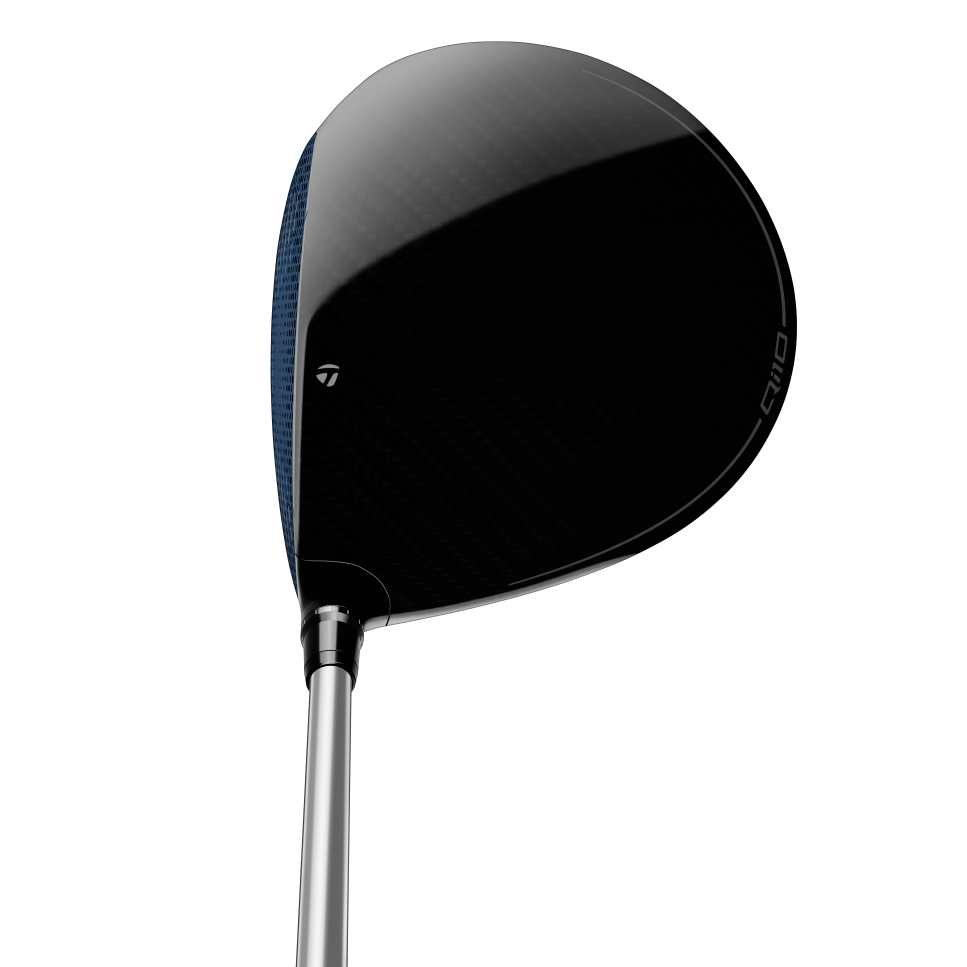[PHOTO: Orlando Ramirez]
Three wins in a row has made Nelly Korda the hottest player in golf, but there remains a glaring question about her game: with one of the sweetest swings in the sport, the kind that leave her male counterparts on the PGA Tour awestruck, why is Korda using a driver that seems to be made for choppers?
Simple: because it’s the right driver for her game. And, secondarily, why wouldn’t every player want to play a more forgiving driver?
Korda, who already has three wins this year including the last two LPGA events, has used TaylorMade’s new Qi10 Max driver from the start of the season when she won the LPGA Drive On Championship in January. With its extremely deep front-to-back length and weighting and heel-biased shaping, the Qi10 Max is TaylorMade’s first driver to break the barrier of 10,000 total MOI and one of only two major company drivers known on the market to do so (Ping G430 Max 10K is the other). The total MOI is a number that combines the traditional heel-toe resistance to twisting measurement with the less known crown-sole resistance to twisting measurement. For perspective, according to TaylorMade a 10,000 total MOI is about 40 percent higher than TaylorMade drivers were a decade ago.
While ultra-high stability on mishits, or forgiveness (which is what MOI really means), seems like something a never-miss tour player would need the least of, that’s probably an over-simplification. Korda’s reasons – “I look down and know I can hit any shot I want with it,” she says – may have little to do with how forgiving it is on mis-hits. For much of her career, though, she’s played drivers with a little bit of a draw bias like TaylorMade’s Stealth 2 HD recently or Titleist’s TSR1 in the past. It’s all about matching her up with her desired shape (more clubhead volume towards the heel side) and her desired right-to-left ball flight, said Ryan Ressa, TaylorMade’s senior tour manager.
“People perceive that it’s kind of an anti-slice club, but it’s, really not,” he said. “It’s really been the case that a club with a rear, heel CG (centre of gravity) club, it’s just always squared up a lot easier for her.
“It’s how she sees the footprint of the head and how it suits her eye and her delivery through the ball.”

TaylorMade Qi10 Max driver. Nelly Korda uses the 10.5-degree model, adjusted down to 10 degrees.
Ressa noted that Korda wants to see the ball on a tee shot fall from right to left, maybe a five-yard draw.
“That’s just the shot she sees, so it’s hard, even if you find something that goes dead straight, it just doesn’t fit her eye,” he said. “She’s made that comment that this is the easiest one for me to square up.”
Aside from her custom shaft (Mitsubishi Diamana GT 60) and custom length (45-and-3/16 inches), Korda’s Qi10 Max is only slightly tweaked from the stock version. The rear perimeter weight is about six grams lighter than standard, which technically makes the driver’s overall MOI slightly less than 10,000, and the TPS sole weight is a little heavier to get the total weight of the head back to standard and give Korda a little more draw.
“It just produced that natural draw she’s looking for, on command,” Ressa said. “So it matched up with the rest of the clubs in her bag really well, so she could make the same swing with every club, and that’s something she’s always wanted to do.”
Of course, the idea of a more forgiving driver can’t be overlooked, even though Ressa estimates that Korda’s typical miss area is about five millimetres off-centre. Ressa senses Korda has been ahead of the curve on better players going with a more forgiving head. He noted a number of players, including Rory McIlroy and Scottie Scheffler, are playing the standard Qi10 instead of the traditional low-spin “tour” style driver like the Qi10 LS. The reason better players have drifted away from more forgiving drivers in the past is that they tended to be stuck with slightly higher CGs. Those would spin and add too much dynamic loft at impact, leading to less than maximum distance. But now the new forgiving drivers, because of more widespread use of lightweight carbon composite in the body (and in the case of TaylorMade in the face itself) come without those compromises.
“Everybody’s been chasing distance for so long, but I think you get to a point where your distance is in a great spot and then you can start, you know, looking at some of these other areas,” Ressa said. “We’ve added the most MOI we’ve ever had in our drivers while not losing any speed or distance. They’re still able to hit all their launch conditions while adding a little bit more forgiveness on a mis-hit.”
There’s a lesson in there for average golfers. A driver fitting can produce a lot of numbers on your screen, but one worth paying special attention to is how often you’re consistently delivering the clubhead square at impact. Obviously, that will show up in longer distance and tighter dispersion, but it should also speak to how easy it is for you to make the same swing, the way Korda’s been doing since the start of the year.



